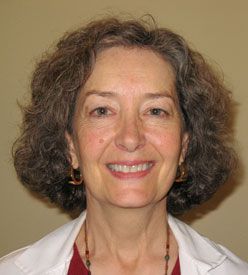Article
Study Results Show Ovarian Cancer Deaths Are Not Reduced by Early-Detection Screening Methods
Author(s):
The risk of dying from ovarian cancer was not reduced when women received CA-125 blood testing and transvaginal ultrasound

Saundra Buys, MD
A randomized, multicenter study found that the risk of dying from ovarian cancer was not reduced when women received CA-125 blood testing and transvaginal ultrasound (TVU) screening, both of which were used in an attempt to detect the disease early. These results will be presented next month at the 47th Annual American Society of Clinical Oncology (ASCO) meeting in Chicago, Illinois.
The randomized Prostate, Lung, Colorectal, and Ovarian (PLCO) Cancer Screening Trial involved 78,216 women aged 55 to 74 years in 10 screening centers in the United States. Ovarian cancer is one of the top 5 leading causes of cancer death in women, but early-stage ovarian cancer has a significantly higher survival rate compared with advanced disease.
Between November 1993 and July 2001, investigators in the PLCO trial randomized women to either the annual screening arm (also called the intervention arm, which had 39,105 participants) or the usual care arm (with 39,111 participants). Women in the intervention arm were given annual CA-125 testing for 6 years and TVU for 4 years; those in the usual care arm were not offered screening tests. All study participants were followed for up to 13 years for cancer diagnoses and death.
Of all the women in the intervention arm, 3285 of them received false positives (8.4% of total participants), but only 212 had true positives. After receiving false positive results, 1080 women chose to undergo biopsy surgery; 163 of those women then suffered at least 1 serious complication of the surgery. Overall, 118 women in the intervention arm died of ovarian cancer compared with 100 in the usual care arm (RR = 1.18; 95% CI, 0.91-1.54).The primary outcome was death from ovarian cancer, and the secondary outcomes were incidence of ovarian cancer and complications associated with screening and diagnostic procedures. In the intervention arm, 212 women were diagnosed with ovarian cancer whereas 176 women in the usual care arm were diagnosed with the disease (rate ratio [RR] = 1.21; 95% confidence interval [CI], 0.99-1.48).
In an ASCO press release, Saundra Buys, MD, lead author and professor of medicine at University of Utah and Huntsman Cancer Institute in Salt Lake City, said that the study’s results were “disappointing, but not necessarily surprising.” Buys admitted that the study’s hypothesis—that CA-125 and TVU testing would identify ovarian cancer early, when it is more likely to be cured—was proved incorrect.
“We found, however, that not only was ovarian cancer mortality not reduced, but that many women—over 3200 of the nearly 30,000 women screened—had false-positive screening tests,” she said. “Over a thousand of these women (1080) had surgery to make a diagnosis, and 15% of them had significant complications from surgery. Since there were harmful effects as a consequence of evaluating false positive tests, it was disappointing that we didn’t see a reduction in mortality.”“Screening for early detection of disease is intuitively attractive: ovarian cancer is usually diagnosed only after symptoms develop, generally at a late stage when long-term survival is unlikely. So, it would have been nice if we had found that screening reduces the mortality from ovarian cancer,” Buys told OncLive.
She added that better screening tools are still needed for early detection of ovarian cancer. “PLCO has published results of evaluations of panels of biomarkers for ovarian cancer and found that none performed better than CA-125 alone,” she noted. “Right now there are no other specific tools. Studies are underway evaluating [the] change of CA-125 over time and other means of improving the efficacy of using CA-125.”
Buys SS, Partridge E, Black A, et al. Effect of screening on ovarian cancer mortality in the Prostate, Lung, Colorectal, and Ovarian (PLCO) Cancer randomized screening trial. J Clin Oncol. 2011. (suppl; abstract 5001)









